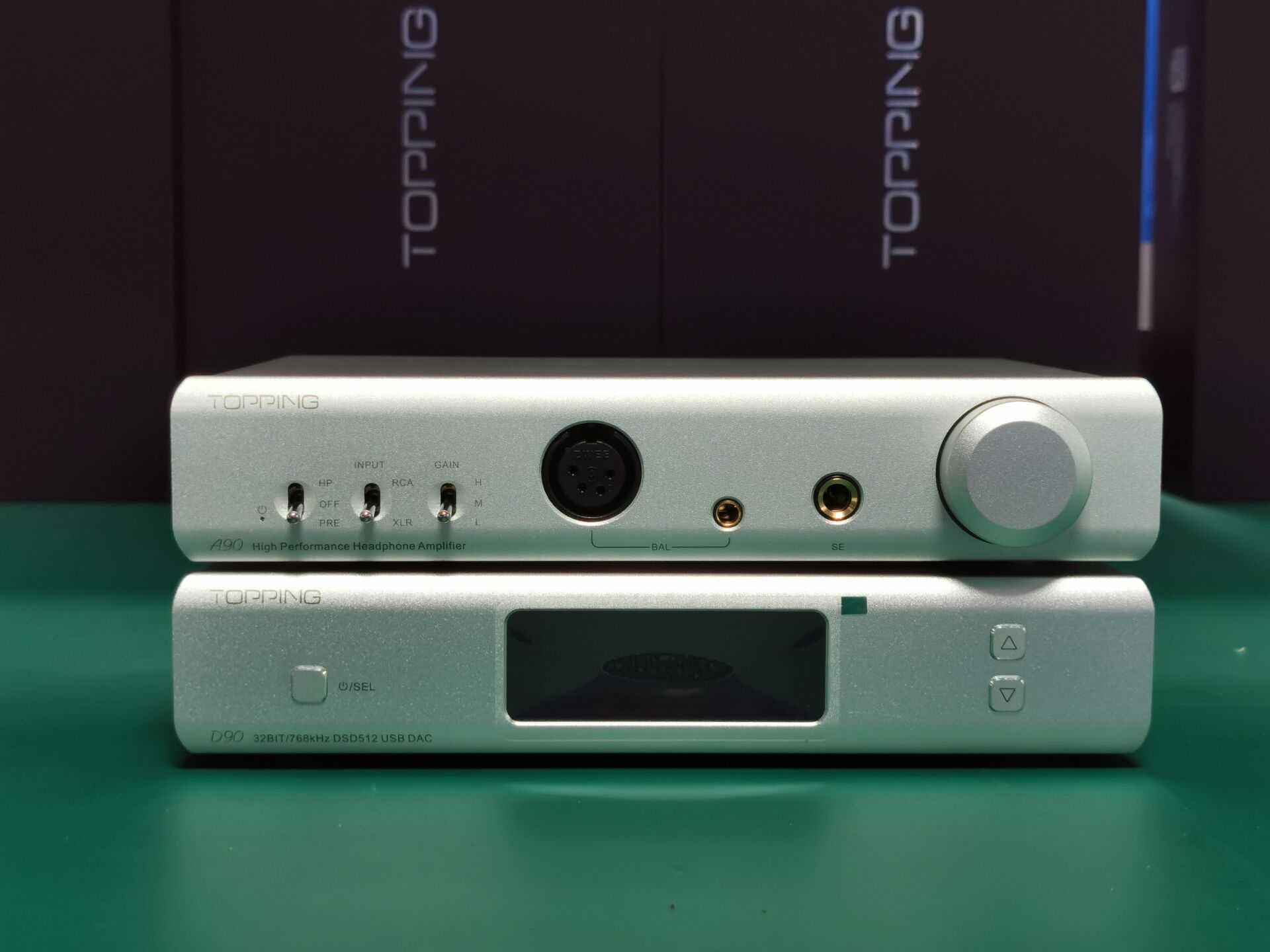Tech Inside
DAC
For the price point, it seems there is a lot of good things stuffed under the hood of the D90. For a start, the DAC inside is the flagship AKM AK4499 which is AKM’s first current-output DAC and their flagship chipset at the time of writing. A broad equivalent of this from ES would be the ES9038PRO in terms of product positioning.
The AKM4499 supersedes the AK4497, a DAC we have seen implemented in the Yulong D10 last year and in pure terms, it can churn out 140dB SNR and -124dB THD+N.
The chipset is also backed up by an Accusilicon Femtosecond dual chipset implementation but it doesn’t state what frequencies they are operating at. I would have liked to have seen 3 deployed instead of 2 so I must presume that the 100mHz sample rate for hi-res audio from 352.8kHz to 768kHz as well as DSD512 is being omitted.
The SNR and dynamic range from the D90 implementation won’t get you those numbers, no system DAC rarely gets that high. However, the D90 does benefit from that enhanced performance spec on paper.
The specified SNR of 123dB unbalanced and 127dB balanced (A-weighted at 1kHz) is better compared to the Cayin iDAC-6 MK2’s 115dB and 122dB under similar loaded figures for unbalanced and balanced. I am presuming real-world testing will not be quite as high but as a performance benchmark that is impressive.
Decoding
The D90 looks very competitive indeed for decoding with a ceiling of PCM 32-bit/768kHz and DSD512 natively via USB and the same capability via its built-in I²S port.
The D90 uses an XMOS XU208 USB stage for decoding but for SPDIF it reverts to an AKM AK4118 chipset which decodes at a maximum of PCM 24-Bit/192kHz which is the norm for coaxial. For optical input, the D90 will decode to the max rate allowable which is 24BIT/192kHz.
Now, the unit we have here does not decode MQA but for an additional $100 Topping does offer an MQA capable version of the D90. I believe that will launch shortly, possibly before the end of April 2020.
Bluetooth
This is a nice bonus feature for me with the inclusion of a Qualcomm CSR8675 chipset, (and a small antenna at the back) to receive a wide range of Bluetooth codecs. This includes LDAC up to 24BIT/96kHz as well as aptX, SBC, and AAC.
This will allow you to hook the D90 up to any transmitting BT source such as the Sony 1Z or even just your smartphone for wireless audio decoding. That will indirectly open up the likes of TIDAL and Spotify if your transmitting source has it.

Wrap-Up
The Topping A90 is lauded as one of the best measuring headphone amplifiers on the market right now, and I can’t deny the numbers that the manufacturer and independent analysis has shown. It also has a clean noise floor under the right circumstances, but for my personal take, I don’t gravitate to using this as much as other amplifiers.
This is mostly due to the more fatiguing sound that I am not as keen to. I’m also not super thrilled about the grounding noise out of RCA inputs, and while that’s not a deal breaker if you can have a balanced DAC, it can be if you do not.
But with all that, the convienences of multiple I/O options as well as the addition of 4.4mm balanced headphone output make this a compelling unit with plenty of power to take on all my headphones with ease. The A90 is going to be a bit controversial I’d say, but it will work for me as a solid-state reviewer unit, and one that I will continue to use for that purpose.
As a final note: the Topping A90 was purchased by myself through Headphones.com. This was not provided as a reviewer unit or on loan.
Unboxing & Accessories
Topping has gone for something a little more considered in their packaging for the D90. I cannot tell you if this is an upgrade on previous stuff from them as I have never had one before. However, quite a lot of component systems I get come in regular bland HiFi brown container packing whereas this comes in a compact branded black box.
Inside the box, the D90 is neatly placed in some heavy-duty protective foam with the accessories and power cable in a cavity to the left side and the instructions manual/warranty card below. Note this is a 3-prong power lead not suitable for UK sockets but they do supply a cheap adapter for 2-pin slots we use here or something suitable for your region.
The D90 does have a built-in switchable power supply that can change from 110-120 50/60 Hz to 220V-240V 50/60 Hz so there should not be an issue with local power standards using the cable.
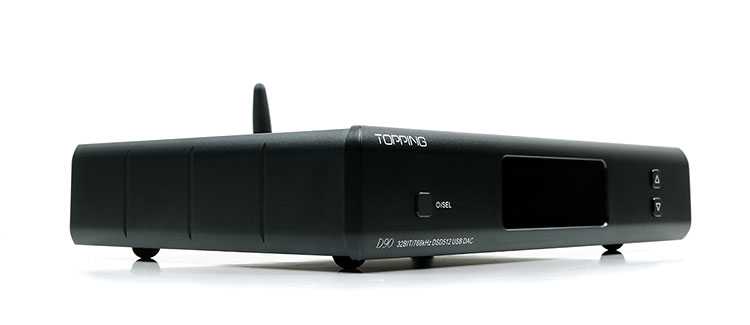
Sound Impressions
I have owned several THX amplifiers in the past, and have also owned a couple Topping Amp/DAC combos and most recently I’ve used the RME ADI-2 DAC, Schiit Asgard 3 and Jotunheim, amongst many others for solid-states. They aren’t necessarily my primary listening devices though, as I typically am using one of my tube amp setups for general headphone enjoyment. But I still use IEMs via solid-state amplifiers and headphones on them for review purposes.
Of all of them, I believe if there was a meaning for the term sterile in regards to sound, I think the Topping A90 is the sterilest of the the sterile crowd — which I’d lump in the THX amplifiers I’ve owned — The Massdrop THX 789, Monoprice THX788, and the SMSL SP200, and to some extent, the RME ADI-2 DAC.
As I have mentioned in my previous reviews on sources as well as headphones, iems etc, I am somewhere in-between the objectivist and subjectivist spectrum, while being an engineer myself, I do lean a bit to objectivism. That said, when I do reviews, I am critically listening, and switching A-B when comparing sources and amps and create my own subjective, and probably biased, opinions at that. And as always, things may sound more exagerrated than reality for the purpose of pointing out any differences.
The A90, outside the humming issues, has a very black background via XLR, and in my opinion, a colder tone. Coming directly from the Schiit Jotunheim, which I thought was a cooler signature than the Asgard 3, I found the Jotunheim to be warmer and bloomier. The A90 has a sharper edgy sound to it, that is a bit more forward sounding, especially in the upper mid-range and treble regions. I actually do like the bass response, as I am one to like quicker transient responses at times, and I feel like this one definitely has a noticeably different type of agility than the Asgard 3 (for sure) as well as the Jotunheim.
The sharper and edgier sound is something I also found in listening critically with all the THX amplifiers I’ve used and to a lesser extent, the RME ADI-2 DAC. Unfortunately, I do not have any of those amplifiers with me to A-B, so my impressions are mostly from memory. Now with hopefully all the other disclaimers out of the way, I think the A90 may be the most forward sounding of the bunch. I do feel it lacks a little bit of soundstage depth, especially compared to the Jotunheim and my current tube amp setup, the Feliks Audio Elise.
Most of these impressions were using the ZMF Verite and Hifiman Arya headphones out of the balanced outputs, but when it comes with using IEMs, I am quite okay with this more sterile sound for whatever reason. The noisefloor is quite small and the ultra low output impedance is great for IEM usage, especially ones that are sensitive to impedance mismatch and/or have high sensitivity. This is a farcry from the iFi Hip DAC and iFi Zen DAC, which I am demoing and use at work for IEMs (respectively). Both of these have really poor noise floors and audible white noise comes out of the 4.4mm balanced outputs on both units.
In reference to the iFi amp/dacs, I can somewhat compare the A90’s sound to my impressions of the Zen DAC using their latest firmware upgrade which features their new linear filter. I found that one to also be a little overly sharp in the upper mid-range and treble to the point that it can be fatiguing, just like on the A90. This was one of the primary reasons why I have downgraded the ZenDAC firmware to an older filter which may not measure as well, but is more pleasant in its presentation with less shimmering highs and forward presentation.
This forward presentation does make clear, sounding details and provides a higher sense of resolution though, and those who want details put forth in front of you will find this amp very well at this attribute.
Our Verdict
As with any review of a DAC, there is a lot of contextual reasoning in describing how they perform. They are the system ‘brains’ and often their output is variable depending on the amp and source and input option you choose to hook them up with.
Right now, I do feel this is a relatively neutral signature but the likes of the Broadway amp are influencing the final link in the sound chain. It is also already pretty easy to pick out the difference between an LDAC quality input and regular aptX in terms of dynamic range for Bluetooth performance.
For $699, however, the D90 is something of a bargain in terms of features and potential performance.
19 место — Аком 60: Характеристики и цена
Аком 60
Аккумулятор Аком 60 занимает девятнадцатое место нашего рейтинга благодаря невысокой стоимости, большому количеству положительных отзывов, а также гарантии от производителя. В сумме с наличием удобной ручки и индикатора заряда данная модель выделяется на фоне других.
| Напряжение | 12 В |
| Пусковой ток | 520 А |
| Емкость | 60 А·ч |
| Тип аккумулятора | кальциевый |
| Типоразмер | 242х175х190 мм |
| Вес | 15.5 кг |
| Цена | 3 950 ₽ |
Аком 60: Преимущества и недостатки
+ Заманчивое соотношение цены и качества;
+ Отзывы преимущественно положительные;
+ Гарантия производителя четыре года;
+ Качественная сборка;
+ Яркий цвет;
+ Наличие удобной ручки для переноски;
+ Индикатор состояния;
— Емкость могла быть и повыше;
— Не терпит полного разряда;
Topping
Surprisingly, this is the debut of Topping on Headfonics. I know they are incredibly popular but I guess our paths have never actively crossed until now. We have been actively receptive to pure DAC review requests so the new D90 is tailor-made to our objective to expand this area for 2020.
I have no previous Topping exposure, even in chance 5-minute store demos to meetings with like-minded audiophiles so I cannot pull any historical comparisons with previous Topping DAC or DAC/Amp models such as the D50 or D70.
We do, however, have a few pure DACs here we use quite heavily such as Cayin’s iDAC-6 MK1 and MK2 and Chord Electronics Qutest so comparisons are not a problem.
At $699 and using one of AKM’s new flagship chipsets, Topping is hitting what I might regard as a sweet spot in terms of affordability and feature sets for the D90. This value for money perception does seem to be a reoccurring Topping business theme.

Wireless Performance Impressions
(Tested using a Samsung Note 9, Sony 1Z DAP, and a Xi Audio Broadway Amp in balanced mode).
Pairing with a Samsung Note 9 and Sony’s 1Z was relatively straightforward. Simply fire up the BT on the source devices and scan and make sure the D90 is in BT mode and it should find the label “D90” quite easily and prompt for a pairing. There are no codes to enter like ‘0000’ as far as I can tell.
Some sources will automatically transmit to the highest codec possible but for the Note 9 I can activate LDAC independently and the D90 received the signal seamlessly. I do see a 96kHz sample rate also on the OLED screen for the D90 so I presume it is recognizing the LDAC signal. When I turn off LDAC it switches to 44.1kHz on the D90 screen.
The D90 wireless range is very good though this is not a huge requirement for a house set up for me. I tend to see that as an essential portable audio measurement. The sync rates when using the D90 BT mode for video playback on the laptop are also very tight.
I would suggest to try and keep the signal to LDAC. It makes such a huge difference in terms of clarity and dynamic range on the D90 playback.

Sound Impressions
Setup
(Tested with a balanced Xi Audio Broadway Amp, USB out from an Acer Nitro 5 laptop. the software was Windows 10, Foobar 2000, and WASAPI drivers. Headphones used were the Dan Clark Audio Ether 2, Meze Empyrean, and Rosson Audio’s RAD-0).
Overall, the D90 is not what I expected from an AKM chipset implementation and represents a break from the more colored house sounds of the 4490 and 4497. Of course, amps can weigh in with their own coloration which is why sometimes DAC’s are a bit harder to mail in terms of their own signature.
However, we did come comparison work recently with the new Cayin iDAC-6 MK2 and it is a fairly neutral tone compared to the Sabre-infused Cayin pure DAC Ha! that feels like a legacy role reversed because it always used to be Sabre DACs were the neutral performers.
Tuning
Now when I say neutral I mean primarily the low-end. The D90 bass via the Broadway is very nicely defined, nothing soft at all about it. It does seem quite linear right up to the lower-mids or relatively uncolored compared to the Cayin iDAC-6 MK2’s organic earthy sound.
Not as crunchy or bombastic as the Qutest either but tighter and cleaner than the Yulong DA10 AK4497 implementation which I found very soft.
The D90 neutral low-end and softer treble adds a bit more ‘midrange emphasis’ to the presentation. However, upper mids percussion sound smooth and quite agreeable with plenty of staging width on display on the Broadway amp. That is one thing that initially struck me it just how good the level of instrumental separation is on the combos we used with the D90.
I would argue Topping has ever so slightly smoothed out the treble response on the D90. That means no glare, nothing brittle or hard sounding but sting a tiny bit of sting out of it at the same time.
If you are coming from an old Ak4490 DAC such as the NuPrime DAC-9 or Cayin’s iDAC-6 MK1 the treble is just so much more refined on the D90. Makes for a very natural and agreeable sound signature without any loss of headroom with neutral amps.
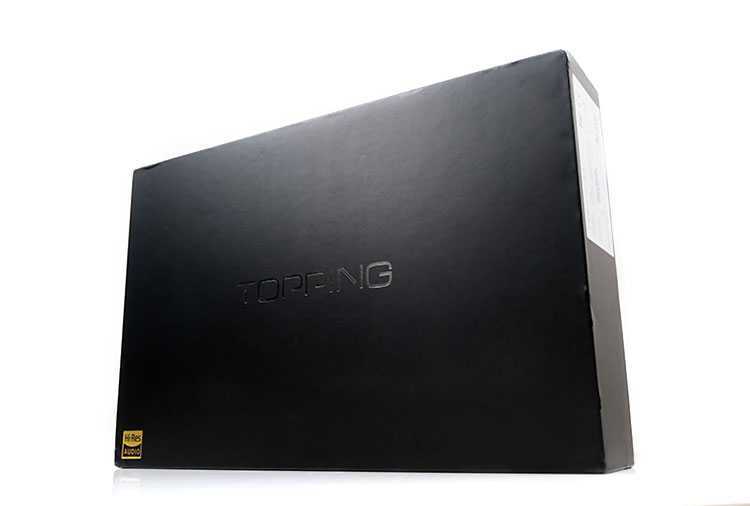
9 место — ALPHALINE EFB: характеристики и цена
ALPHALINE EFB
| Страна производитель | Корея; |
| Типоразмер | Евро L2; |
| ДхШхВ, мм | 238x129x227 мм; |
| Тип клеммы | Стандартные клеммы (Евро) |
| Пусковой ток | 460 А |
| Напряжение | 12 В |
| Емкость | 45 А/ч |
| Цена | 6200 руб |
— Обратная полярность.
— Необслуживаемого типа.
— Разработан для автомобилей с системой «старт-стоп».
— Доступная цена.
— Изготовлен качественно.
— Установлен указатель заряда.
— Удобная крепкая ручка для переноски.
— За счет высоты может не подходит для всех автомобилей.
— Перед покупкой следует обратить внимание на длину проводов и посадочное место под капотом
8 место — TYUMEN Battery Premium: характеристики и цена
TYUMEN Battery Premium
| Страна производитель | Россия; |
| Типоразмер | Евро L2; |
| ДхШхВ, мм | 242х175х190 мм; |
| Тип клеммы | Стандартные клеммы (Евро) |
| Пусковой ток | 590 А |
| Напряжение | 12 В |
| Емкость | 64 А/ч |
| Цена | 3600 руб |
Design
Form Factor
Out of the box, and it is very compact and small for a flagship DAC. Certainly, the dimensions are much smaller than the Cayin iDAC-6 i-series unit but still not as small as the Chord Electronics Qutest. Still, the D90 has a lot more features than the Qutest hence there are a lot more sockets to fit in but it is still very stackable.
It may be small but damn, the D90 is solid for its size. I was expecting it to be a bit on the hollow flexy side of things as some of these slimline units can be but not the D90. This is a ‘solid knock’ on the housing as opposed to some disheartening echo.
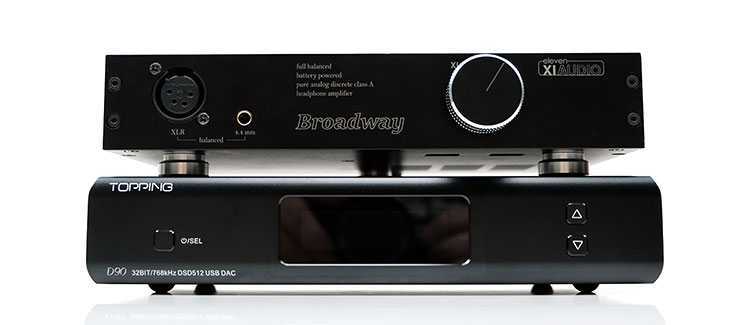
In the picture above we stacked it with the excellent Xi Audio Broadway balanced amplifier and it is an almost perfect size match for stacking.
The Broadway measures at 212 mm L x 156 mm L x 48 mm H and the D90 is maybe a few mm wider at best. The D90’s rubbery 4 feet at the base of the aluminum housing is just inset a little so you can stack it on top or below without it slipping off but aesthetically below seems a little nicer to me.
Aesthetic
The design aesthetic is a little industrial for me so it doesn’t quite stand out from the crowd with its slightly angular curved finish and front plates larger than the main body housing. The materials are CNC machined aluminum in black, (or silver) with a non-scratch surface finish so they do look durable.
What I do like is that color-coding applies to the rear plate also. So many DAC’s tend to leave the rear plate relatively uncoated since you are unlikely to see it. The D90 stays all-black back to front.
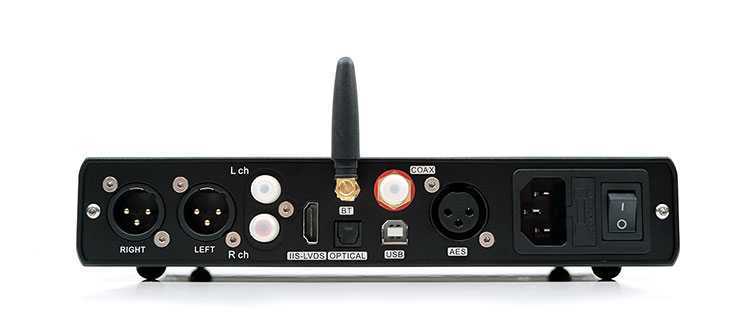
User Experience
The Topping A90 has a nice array of switches, knob, and input/output options. It has both RCA and XLR input and output on the back, and an internal power supply unit, so a standard power cable will work fine with it.
On the front, it has a large volume knob that has a nice balance of smoothness and weight, and blends in nicely with the silver chassis. On the left side are three toggle switches controling the power on/off, headphone amp or preamp function, and one of three gain modes. There is also a power flip switch on the back on the power supply.
For headphone output, there’s the standard option of 1/4 inch single-ended amplified output, as well as balanced options of 4-pin XLR and 4.4mm Pentaconn. One of the driving factors for me obtaining this amplifier was for that 4.4mm output as I have grown very fond of this connector and have switched all my IEMs and headphone cables to this connector type.
Now, onto the not so good — ground noise.
There’s a chance that if you use RCA stereo coaxial inputs as your source into the amp, you may get humming or ground noise. I experienced this when I used my Schiit Saga+ Preamp, but it did not occur with using the Schiit Bifrost 2 DAC when paired with RCA connectors. One thing to also note was that this loud humming noise was really bad when I had plugged my iPhone 5S into the Preamp as a secondary source, even when it wasn’t the selected source input. It seemed the noise worsened significantly if it was being charged, and decreased when unplugged from power. That said, the Saga+ going into the A90 still had a ground noise that was audible.
Using XLR input totally kills this problem but it is something to note. Topping/John Yang mentioned that this is probably due to the design choice of using an internal power supply unit instead of an external power brick, however, I will note that I never heard this noise using the Schiit Saga+ connected to either the Schiit Asgard 3 or the Schiit Jotunheim, which also both have internal power supplies.
I/O
For the size, the D90 has a wide range of inputs and outputs and all neatly arranged on the rear panel. To the far left are the analog outputs including balanced 3-pin XLR and unbalanced dual RCA.
The output voltage on these are fixed at 2.2V, (unbalanced) and 4.4V (balanced), unlike the pre-out and line-out of the iDAC-6 MK2. However, you can elect via the supplied remote control to use RCA or XLR only or both at the same time. Though be warned, using both at the same time might tax the system a bit much.
To the center of the D90 rear panel, you will find all the digital inputs including coaxial, optical, AES, and USB. The standout connections include an I²S and the detachable BT antenna for its wireless receiver.
I²S simplifies connections between two I²S compliant devices by merely requiring an HDMI connector. For example, Cayin’s N6ii DAP has an I²S output which you can connect to the D90 input. The same also for Cayin’s iDAP-6 streamer so technically these two units are quite compatible.

Front Panel
The D90 uses a mix of physical buttons and a separate small remote control. Not everything is accessible via the physical control panel. For example, the built-in 6 digital filter feature can only be operated via the remote control, as also the OLED screen brightness as well as some of the I/O options.
From the control panel on the D90, you can cycle through the input selector to pick the source input and the arrow buttons will give you a measure of digital volume control on the pre-out. You can view your channel status, the signal type (PCM or DSD), the sample rate as well as the volume level, (dB).




























